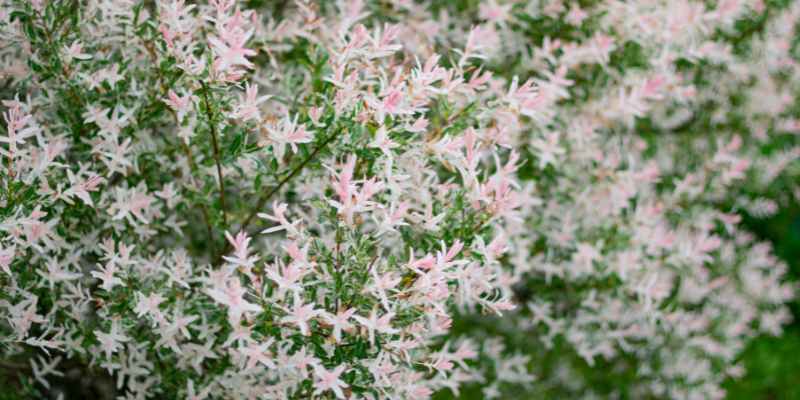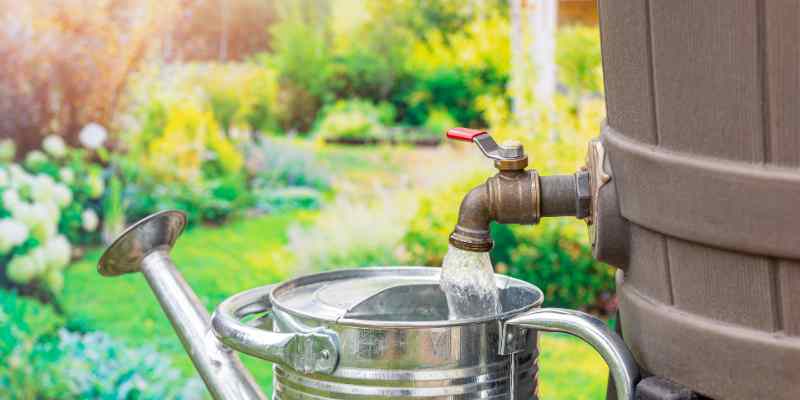The Shrimp Tree or Flamingo Willow (Salix integra) is an ornamental bush prized for its variegated foliage of pink, cream, and soft green, similar to Salix integra 'Hakuro Nishiki'. Its rounded, naturally graphic silhouette and great hardiness make it a must-have for small gardens, terraces, and low hedges. Easy to cultivate, the Shrimp Tree does, however, show some sensitivity to intense summer heat. Special care is required in summer to prevent the drying out of its highly decorative foliage.

Under the effect of intense summer heat, it is not uncommon to see the leaves of the flamingo willow turn brown, dry out, or fall prematurely: these are visible signs of water or thermal stress, which can be anticipated or corrected. In this tutorial, discover how to prevent brown leaves on your shrimp tree, maintain healthy foliage throughout the summer, and take effective action if your bush shows signs of fatigue.
Understanding why your shrimp tree does not cope well with summer
Even though it withstands cold very well, the flamingo willow struggles with excess heat and dry soils. Native to Japan, it is naturally adapted to humid and temperate climates. The flamingo willow is not suited for arid conditions or scorching exposures. It requires constant moisture, gentle light, and some protection from the sun.
What happens in summer:
- Under direct sunlight, especially in the afternoon, its leaves can burn.
- In dry soil, the root ball dries out quickly, especially in pots.
- Result: the leaves of the shrimp tree turn brown, curl up, or fall prematurely.
Preparing your shrimp tree to face summer
Step 1: monitor soil moisture
- From May onwards, regularly test the soil by scratching 5 cm deep.
- If it is dry, water thoroughly.
- In the ground, 1 to 2 deep waterings per week are sufficient if the soil is well mulched.
- In pots, water every 2 to 3 days, or even daily during heatwaves.
Step 2: install good mulching
- Apply 5 to 7 cm of bark, wood chips, or flax flakes at the base of the bush.
- This mulching retains moisture, prevents heat spikes, and protects the roots.
- Renew it every spring.

Step 3: adjust exposure
- Choose a bright location, but without direct sunlight during hot hours.
- In hot regions or well-draining soil, prefer partial shade or temporarily shade the plant.
- In pots, move the bush under a tree or near an east-facing wall.
Step 4: prune the flamingo willow before the heat
- At the end of winter, carry out light pruning to aerate the branches.
- A well-structured plant withstands heat and summer diseases better.
What to do if the leaves of your shrimp tree turn brown?
Good news, this water and thermal stress is reversible if action is taken quickly and effectively.
Symptoms to recognise
- Browned leaves at the tips, curled or falling.
- Dehydrated branches, slowed growth.
Step 1: rehydrate deeply
- In the ground: water slowly, using rainwater (better tolerated by the roots, especially after a heatwave), several times in succession, so that the water reaches the roots.
- In pots: immerse the container in a basin of water until saturated, then drain.

Step 2: care for the shrimp tree
- Cut off completely dried leaves.
- Remove burnt branches.
- Do not touch the young shoots that are partially affected: they may recover.
Step 3: reduce thermal stress
- Move pots to partial shade.
- Install shading fabric in the ground if necessary.
Step 4: restore coolness at the base
- Add or renew the mulching (5 to 7 cm) around the base of the plant.
With prompt intervention, your flamingo willow can bounce back by the end of summer. It will form vigorous variegated foliage again if conditions become favourable.
































Comments